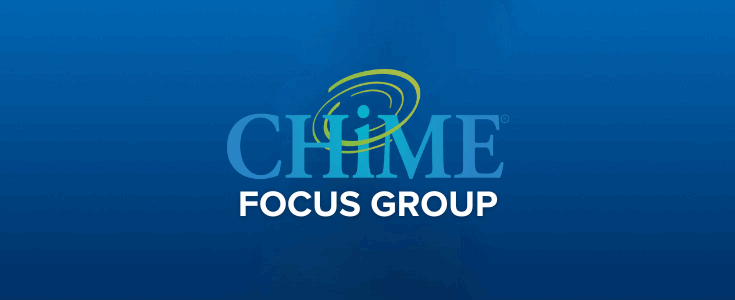What’s Different About Healthcare IT Hiring Today vs. 5 Years Ago

Picture a healthcare IT department in 2019. Consultants are boarding planes every Monday morning, armed with rolling suitcases and expense reports. System admins are patching servers in the hospital basement. And remote work? That was a perk reserved for a lucky few.
Fast-forward to today. Those consultants are logging into Teams from their kitchen tables. A cybersecurity analyst in Kentucky is securing a health system in California she’s never set foot in. And every CIO has “AI strategy” circled, underlined, and highlighted on their whiteboard.
Healthcare IT hiring hasn’t just shifted — it’s been flipped inside out. What once felt like “standard operating procedure” has given way to new rules, new talent battles, and entirely new job functions.
“Pre-COVID, the majority of healthcare IT hiring was local. Today, it’s almost the exact opposite,” says Tony Catalano, Senior Vice President, Medix Technology. “Nobody would have considered hiring someone in another state they’d never meet in person. Now, it’s become acceptable.”
Remote Work in Healthcare IT: From Frequent Flyers to Zoom Lifers
Five years ago, healthcare IT hiring had one rule: If you wanted the job, you had to be on-site. Even roles that didn’t need face-to-face interaction came with a desk badge, a parking pass, and maybe even a relocation package.
Fast-forward a few years: That rule is gone.
“I don’t know of a single project today requiring people to be on-site four days a week,” Catalano says. “At most, we see organizations bringing teams in once a month. Hybrid has become the status quo.”
The upside? Wider candidate pools. A hospital in Florida can hire a cybersecurity analyst in California without blinking. The catch? That analyst also has a wealth of other options — from health systems, insurers, start-ups, even tech giants.
The bottom line: Healthcare IT went from a world of frequent flyers to Zoom lifers. And while that flexibility has opened new doors, it’s also created a national tug-of-war for the best talent.
The Most In-Demand Healthcare IT Skills Today
Five years ago, the healthcare IT “wish list” was straightforward: configuring EHRs, managing servers, and troubleshooting workflows. The must-have skills were about stability and compliance.
Today, the skills in demand tell a different story.
- Security expertise. It’s no longer enough to keep systems online — professionals now need to anticipate and neutralize threats before they disrupt patient care.
- Data fluency. Teams must turn years of digital records into meaningful insights, requiring skills in analytics, cloud infrastructure, and data integration.
- Adaptability. With rapid tech adoption, employees are expected to pivot quickly — from ERP modernization one month to merger-driven integrations the next.
- Innovation mindset. Beyond technical know-how, healthcare IT professionals are valued for their ability to think strategically, align with clinicians, and drive projects that improve patient outcomes.
“Organizations are adopting new technologies, trying to innovate, and pushing for better patient care,” Catalano explains. “But they’re still expected to keep the lights on, too. That’s where the real hiring pressure shows up.”
The shift is clear: The skills that once centered on maintenance have expanded to include strategy, agility, and innovation. It’s not just about what healthcare IT teams do — it’s about how quickly they can evolve.
Why Compensation and Retention Are Bigger Challenges Than Ever
If remote work broke down geographic barriers, compensation cracked the rest of the system wide open. Five years ago, hospitals were mostly competing with other hospitals for IT staff. Today, they’re bidding against insurers, start-ups, and tech giants — and candidates know it.
Salaries are climbing, benefits are expanding, and flexibility is now part of the package. But even with bigger paychecks on the table, turnover is a growing problem.
“Organizations are facing turnover because employees know they can leave for more exciting projects, better pay, or fully remote roles,” Catalano says. “Replacing those people is tough — and expensive.”
The lesson? Retention isn’t about locking people into jobs — it’s about giving them reasons to stay. Talented HIT professionals want to work on innovative projects, learn new technologies, and feel part of a mission. Put them on repetitive “run and maintain” work for too long, and they’ll be gone before the next upgrade cycle.
In this environment, the winners won’t be the organizations that simply throw money at candidates but the ones that create roles worth sticking around for.
The Role of AI and New Technology in Healthcare IT Hiring
No topic has shaken healthcare IT hiring more in the past five years than artificial intelligence. Once a buzzword, AI is now a budget line — and entire teams are being built around it.
Some organizations are standing up governance committees. Others are hiring data scientists, analysts, and even emerging roles like chief AI officer. The question has shifted from “Should we use AI?” to “How fast can we scale it?”
That speed has fueled anxiety among IT professionals worried about automation replacing them. Catalano is quick to challenge that narrative:
“AI isn’t replacing people — it’s making them more effective,” he says. “Yes, repetitive tasks can be automated. But that frees people up to work on the innovative projects they actually want to do.”
AI may be the headline, but it’s not the only disruptor. Cybersecurity is consuming budgets and headcount. ERP modernization has re-entered the spotlight. And ongoing mergers and acquisitions are creating whole new teams dedicated to integration.
The common thread? Healthcare IT roles are no longer just about keeping systems online. They’re about driving transformation, managing risk, and moving innovation into patient care faster than ever before.
What CIOs and CTOs Should Expect in the Future of Healthcare IT Hiring
If the last five years flipped healthcare IT hiring on its head, the next five promise another shake-up. Catalano sees one shift already forming: a slow swing back toward local hiring.
“I’ve talked to several CIOs and CEOs who now require new hires to live within commuting distance,” he explains. “We won’t go back to five days a week on-site, but we will see more emphasis on local teams and culture.”
At the same time, AI will keep expanding — not just in tools but in the people needed to manage them. Data science and analytics roles will grow as health systems push to turn years of information into actionable insights. And security will remain a constant priority, with cyber threats only escalating.
In short: the “next normal” won’t be about returning to the past but about blending flexibility with community and innovation with stability. The healthcare IT leaders who succeed will be the ones who hire with both today’s projects and tomorrow’s breakthroughs in mind.
Key Takeaways: How to Adapt Your Healthcare IT Hiring Strategy Now
- Remote redefined the market. Geography is no longer a barrier — which means talent pools are bigger, but competition is tougher.
- Skills shifted fast. Cybersecurity, AI, ERP, and data roles are now at the top of the list.
- Retention is the real challenge. Salary alone won’t keep people; meaningful, innovative work will.
- AI is a power tool, not a pink slip. It’s reshaping roles and unlocking opportunities for people to do higher-value work.
- The future is hybrid. Expect a balance of local hiring for culture and collaboration, with flexibility baked in.
Final Word
Healthcare IT hiring today looks nothing like it did five years ago — and it will look different again five years from now. The leaders who get ahead won’t be the ones chasing yesterday’s job descriptions. They’ll be the ones hiring as if it’s already 2030: flexible, innovative, and ready for whatever comes next.





